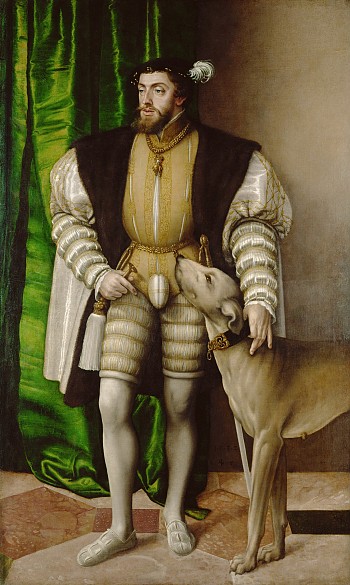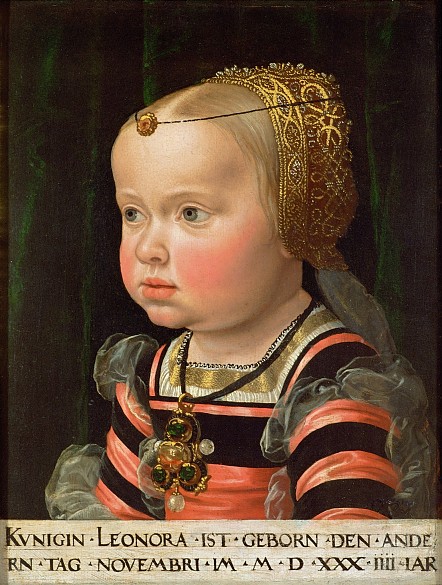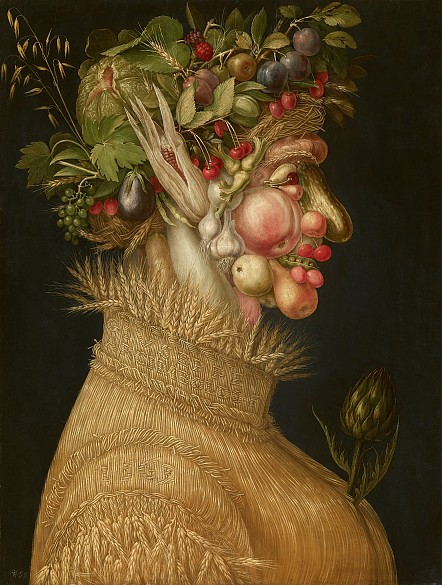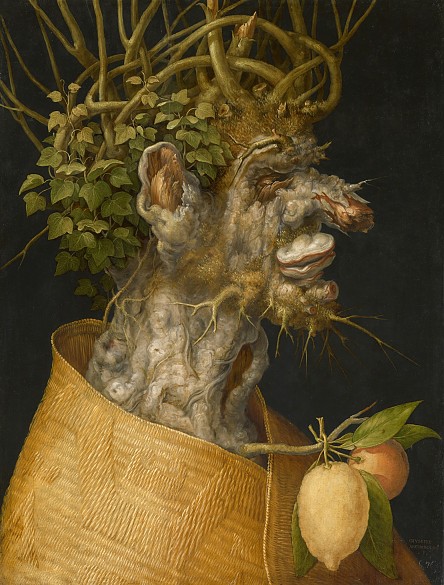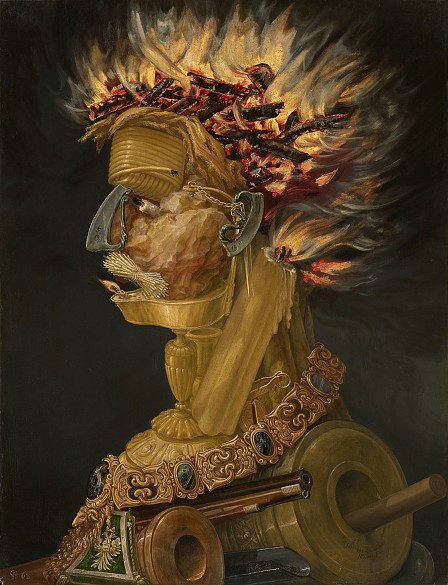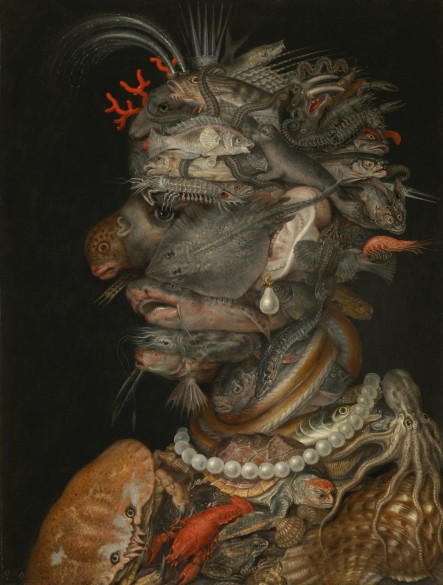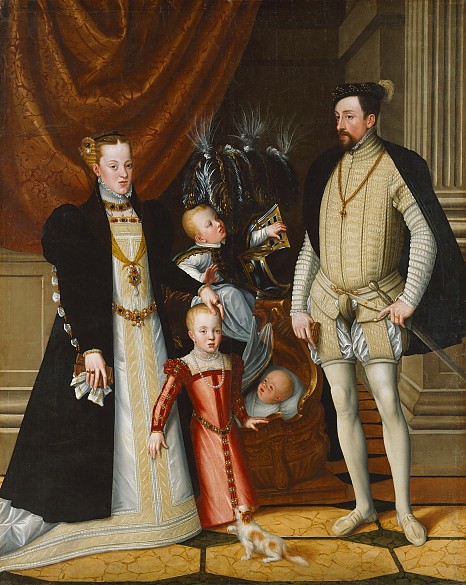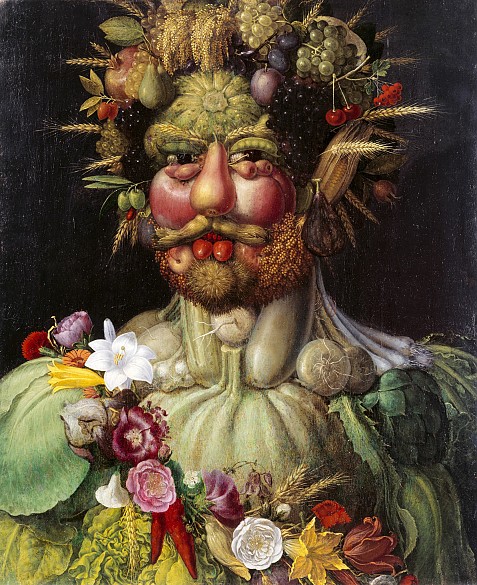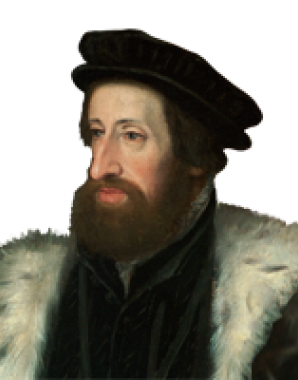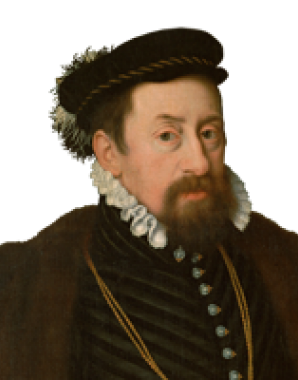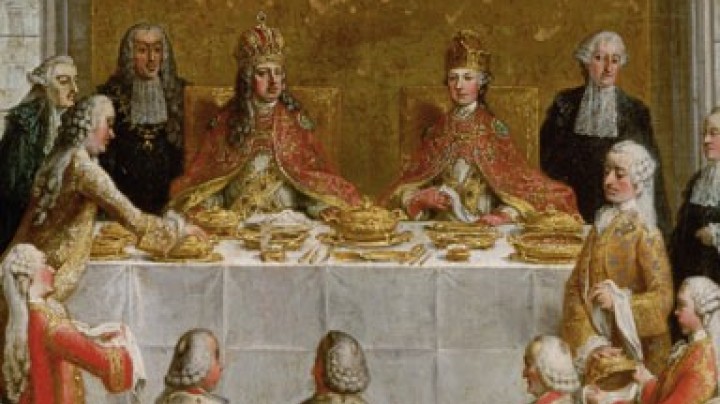Depicting imperial might in pictures – with fruit
An emperor made of cucumbers: Italian court painter Giuseppe Arcimboldo created ‘vegetable’ portraits of Habsburg rulers with allegorical meanings.
Poem by Gregorio Comanini, an Italian scholar, on the portrait of Rudolf II as Vertumnus.But like the learned men of Egypt, the most loyal servant Arcimboldo dedicated his heart and work to your glorification and covered your godlike visage with a veil. Despise not lesser things! When God created Earth, he too found pleasure in small things. Things far smaller that those with which the high and mighty among men show their great and admirable power.
Ferdinand I employed Jakob Seisenegger (1505–1567) as court painter from 1531. He specialized in portraits and painted likenesses of various members of the Habsburg dynasty all over Europe. In keeping with the conventions of courtly portraiture, these were mostly full-length portraits, with the robes and faces rendered with meticulous attention to detail.
From the middle of the sixteenth century it was mainly Italian artists who were summoned to the courts of Ferdinand I and his sons. The son of an artist, Giuseppe Arcimboldo (1527–1593) came from a respected Milanese family. He worked at the Viennese court from the 1550s. Apart from portrait painting, his main duties consisted of staging courtly festivities and masquerades. His most famous works are the allegories of the Four Seasons and Four Elements – heads composed of animals, fruits, vegetables and man-made objects. The paintings of the seasons and elements have been linked to the panegyrics dedicated to Emperor Maximilian II composed by the humanist poet Giovanni Baptista Fonteo, who was also active at the imperial court, thus indicating that the paintings are intended as allegories of Maximilian’s rule. The latter was conceived of as extending over the entire world as composed of the elements and seasons. The painting of Summer also hymned the princely virtue of munificence.
According to extant court accounts, Arcimboldo also painted numerous portraits of Ferdinand I and his family – these have either not survived or are not identifiable as such.
Later on Arcimboldo was active at the court of Rudolf II in Prague, immortalizing the latter as Vertumnus, the god of the seasons, a portrait composed out of a plethora of fruits, vegetables and flowers. Here again, the painting was accompanied by poems explaining its intention: the emperor holds sway over the seasons as he does over the countries of the world. The harmonious arrangement of flowers and fruits symbolized his all-embracing and unifying dominion, peace and prosperity. The emperor rewarded Arcimboldo for this painting with the title of count palatine.
